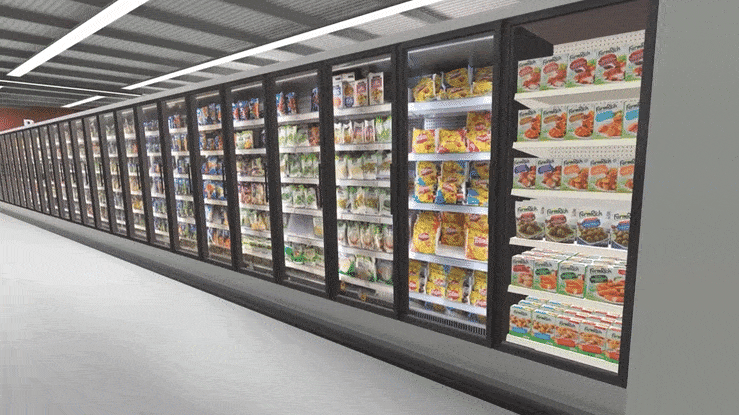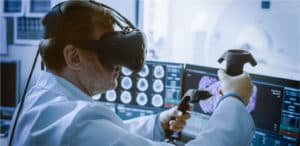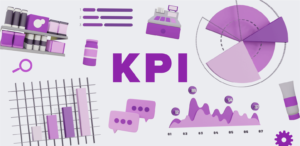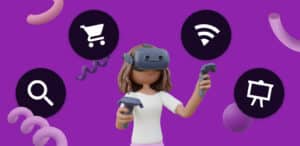6 Applications for 3D Planogram Software in Retail
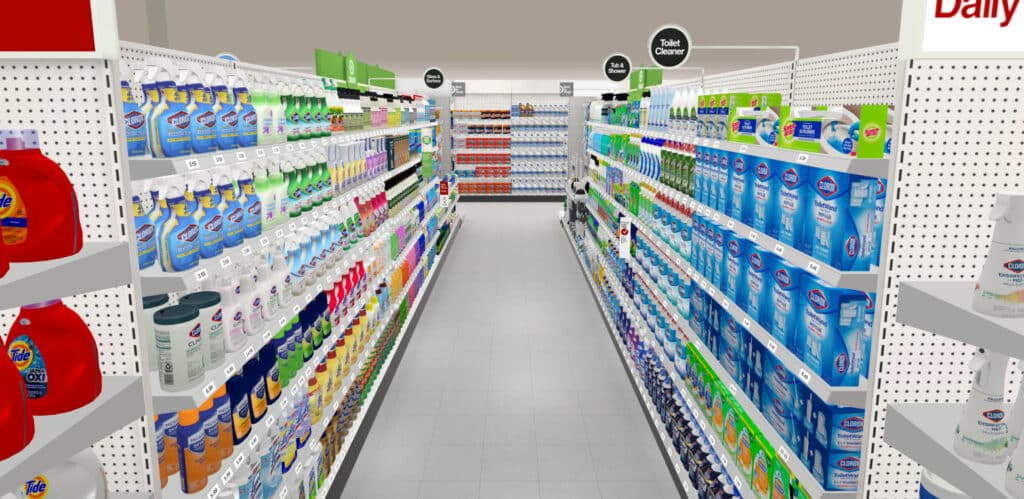
As the world of retail continues to evolve, leading brands are turning to virtual reality planogram software to enhance their operations and gain a competitive edge. This software offers a range of benefits for retail, including space planning, merchandising, market research, and training, enabling retailers to visualize store concepts and even explore the metaverse.
Industry leaders are investing in the virtual reality sector, which is expected to grow at a rate of 21.6% by 2027. Among the popular virtual reality technologies being adopted in retail is 3D planogram software, a versatile and cost-effective tool that enables brands of all sizes to optimize their resources and save time. Investing in emerging industry innovations such as this can help companies fast-track their growth and stay ahead of the competition.
3D planogram software offers a wide range of capabilities, from performing A/B testing on interchangeable displays to presenting innovative ideas to colleagues. It provides almost all of the features and benefits of physical planograms without the added costs, building expenses, and time-consuming efforts required to make it all work together seamlessly. With 3D software, innovation has never been more effortless! In the retail industry, 3D planogram software can be used in many applications, including:
1. Space Planning
Say goodbye to the hassle of physically mapping out your brand's layout. 3D space planning software makes it easy to design and realistically view layouts, enabling you to quickly and easily rearrange your virtual store using digital fixtures.
Digital fixtures are versatile and easy to manipulate, allowing for quick and efficient arrangement of store layouts. This enables retailers to experiment with different layouts without the need for physical labor and costs associated with physically moving fixtures. They also offer greater accuracy and precision in the planning process, as they are created and placed within a digital environment. This leaves less room for error and miscalculations in product placement, ensuring that the final layout is optimized for customer flow and maximizes retail space.
By utilizing virtual reality technology, retailers can experience the store layout and digital fixtures to scale as they would be in real life. This can help retailers to identify potential issues with the store layout or fixture placement before they are physically implemented, leading to more efficient and cost-effective planning.
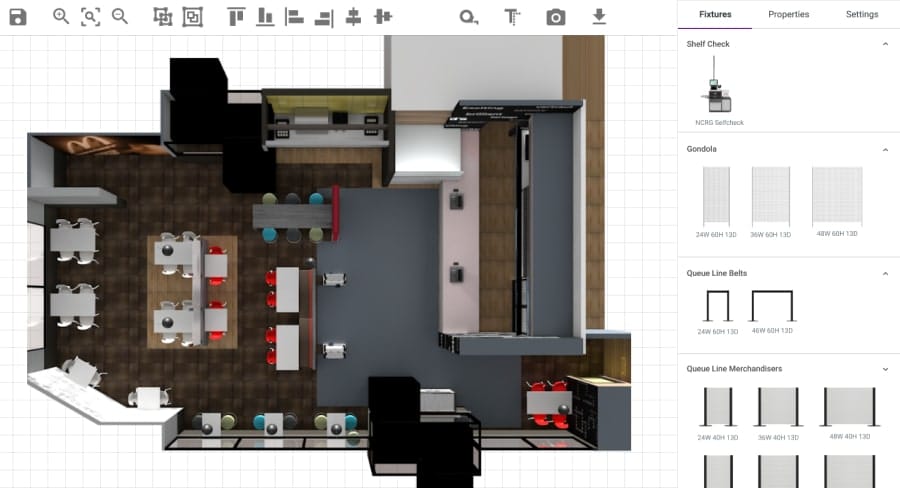
2. Merchandising
Enhanced merchandising is essential in driving sales and growth for retail brands, but it can be a time-consuming and resource-intensive process. Luckily, 3D planogram merchandising software is making it easier for businesses to create unlimited variations of 3D merchandising plans using digital fixtures, products, and signage.
With a user-friendly VR planogram creation software, brands can easily import their digital assets to modify, build, and implement their merchandising plans. ReadySet planogram software provides users with a complete 3D model library with thousands of products and fixtures, while also allowing users to upload images to create digital assets such as signage and product prototypes. Once imported, users can drag and drop assets into your digital twin, testing and modifying your plans as needed.
By utilizing 3D planogram merchandising software, retail brands can save time and resources while creating true-to-scale 3D POGs that drive sales and skyrocket growth.
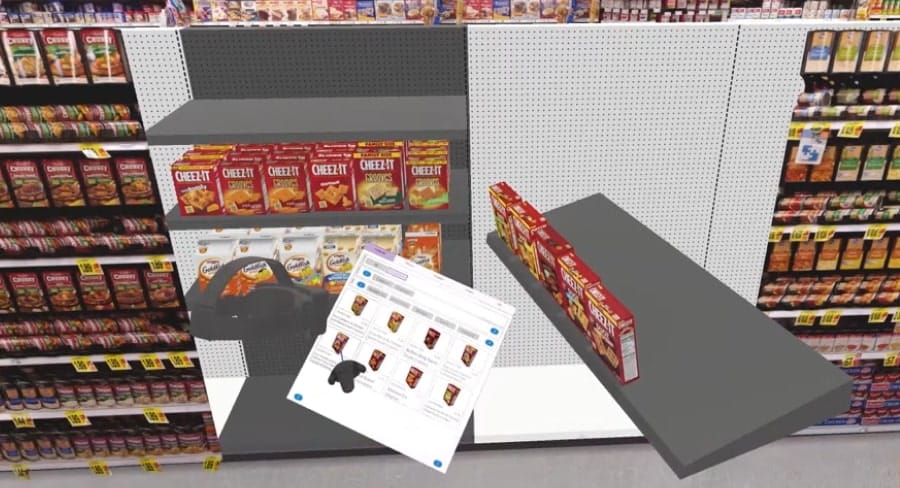
3. Market Research
Want to test how successful your 3D planograms will be in the market? Market research is essential for any business looking to make informed decisions and gain a competitive edge. However, traditional research methods can be expensive and time-consuming. Fortunately, virtual reality (VR) research is changing the game, providing an innovative and cost-effective way to conduct primary research and gain unique insights that your competitors may not have access to.
VR research allows businesses to simulate real-world experiences and observe consumer behavior in a controlled environment. This type of research can be conducted using advanced VR headsets with eye-tracking technology that records real-time consumer habits and precise eye movements. The customer data types generated from these experiences can be used to gain a deeper understanding of shopping behavior, including product fixation points, path tracking, and product findability times. The insights and data collected are displayed through easy-to-read heatmaps and dashboard reports.
By conducting accurate VR research, businesses can optimize their in-store merchandising plans and gain a competitive advantage. VR research can also help businesses identify potential issues with the store layout or fixture placement before they are physically implemented, leading to more efficient and cost-effective planning.
Moreover, VR research is a powerful tool for testing the effectiveness of new products, services, and marketing campaigns. This type of research allows businesses to gather feedback on new ideas before they are launched to the market, helping to reduce the risk of failure and improve the chances of success.
Additionally, VR research offers the ability to conduct research at scale, allowing businesses to test a wide range of products and concepts simultaneously. This allows for quick and efficient analysis of multiple data points, providing businesses with a comprehensive view of consumer behavior and preferences.
Overall, VR research offers a game-changing way for businesses to gain unique insights into consumer behavior, optimize their operations, and gain a competitive edge. By embracing this innovative technology, businesses can make informed decisions, save valuable time and resources, and stay ahead of the competition.
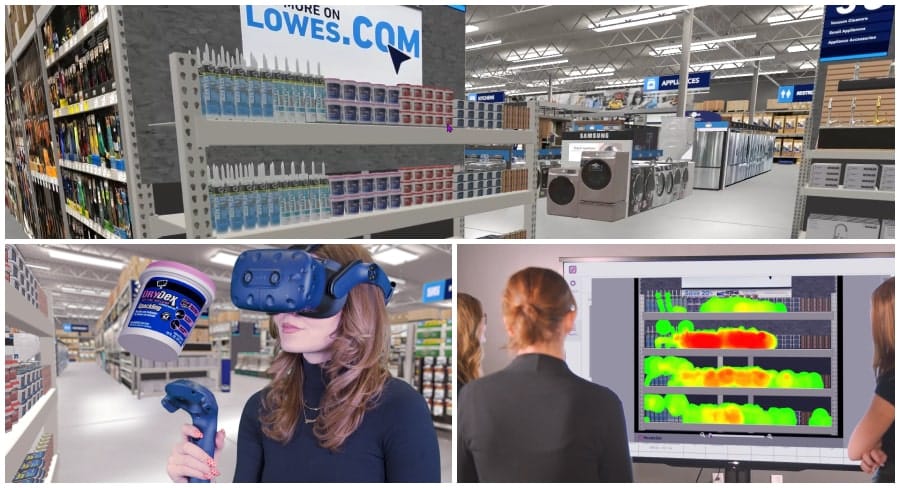
4. Training and education
The digital assets generated from 3D planogram software can also serve as a powerful tool for VR training and education in the retail industry. For example, companies can create virtual training programs using 3D assets to simulate real-life scenarios, allowing employees to practice and learn in a safe and controlled environment. By utilizing digital fixtures and products for training with VR, it is possible to train students on merchandising techniques, provide education within a safe environment to employees on new machinery or processes, and even facilitate corporate training sessions.
Using a VR headset for training creates a higher level of engagement, focus, and interest in learning. VR learning experiences can help individuals absorb up to four times more information compared to traditional training environments. Additionally, people who undergo VR training tend to feel more comfortable and confident when transitioning to the real work environment due to their already acquired experience in the digital twin.
By adopting virtual reality training, businesses can save valuable time, money, and resources typically spent on inventory and traditional training methods. Take advantage of the immersive learning experience offered by VR technology and boost your employee's knowledge and skills for increased efficiency and productivity.
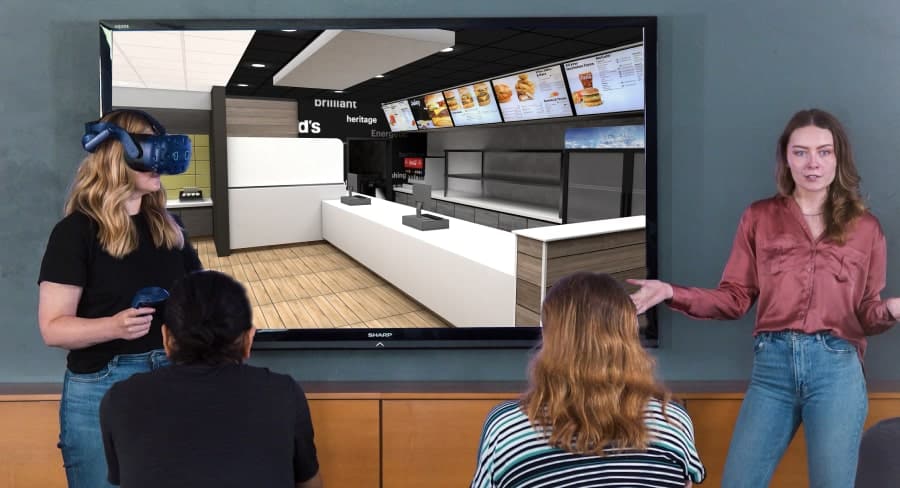
5. Store visualization
You can enhance the way you present your store layout or product displays by offering interactive walkthroughs using VR technology. With VR store presentations, your audience can experience an immersive virtual tour within a VR headset or on a laptop through your PowerPoint or Google Slides presentation.
In the VR headset, your audience can interact with the merchandising set as they would in real life, by walking around the store and picking up products. When viewing on a computer, you can offer an interactive, 360-degree experience using a mouse to navigate around and interact with objects in the virtual space.
Utilizing VR in your retail sales presentations can wow your audience by providing a realistic product view that can be rotated, zoomed in and out, and viewed from all angles. This allows your audience to experience the products and fixtures as they would in real life, adding to the overall authenticity of the experience.
By incorporating virtual store tour software into your presentation, you can stand out from other presentations and showcase your innovative presentation style. Engage your audience by navigating through the aisles and interacting with the planogram you created, bringing it to life. Keep your audience interested by presenting your ideas in real-time through 3D visual merchandising techniques.
6. V-commerce/Metaverse
The 3D assets created from planogram software can be used to create immersive metaverse virtual shopping experiences, allowing users to explore digital worlds, interact with virtual objects and engage with each other in real-time. Brands can leverage 3D assets to create virtual storefronts, where customers can browse products and make purchases, or create virtual showrooms, where they can showcase new products in a realistic and engaging way.
This virtual commerce (vcommerce) is expected to be the next evolution of e-commerce because 3D assets have the ability to provide a realistic representation of products and environments. For example, 3D models can be created to represent a physical storefront or showroom, allowing customers to experience the space virtually. Additionally, 3D assets can be used to create interactive product displays, where customers can explore and interact with products in real-time. Shopping in the metaverse allows customers to get a sense of the product's size, shape, and features before making a purchase, which can help to build confidence and increase sales.
Overall, the use of 3D assets in metaverse experiences offers a powerful way for brands to create engaging and interactive virtual shopping experiences for their customers. By leveraging 3D assets, companies can create immersive and realistic virtual worlds that can drive engagement, build brand loyalty, and increase sales.
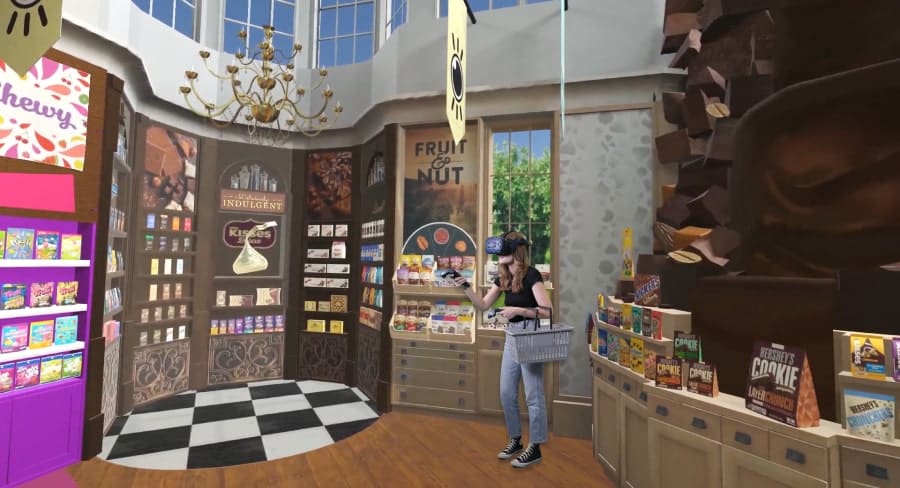
In conclusion, 3D planogram software is an innovative tool that offers numerous benefits to the retail industry. It enables retailers to optimize their resources and save time in space planning, merchandising, market research, and training, leading to greater efficiency and productivity. By utilizing virtual reality technology, retailers can experience the store layout and digital fixtures to scale as they would be in real life.
Moreover, 3D planogram merchandising software allows businesses to create unlimited variations of 3D merchandising plans using digital fixtures, products, and signage. The behavioral data and insights received from VR experiences allow retailers to make changes and tweaks that optimize in-store merchandising plans and market share.
In addition, virtual reality training provides a safe and controlled environment for employees to practice and learn in, leading to increased efficiency and productivity. With the continued growth of the virtual reality sector, investing in 3D planogram software can help companies stay ahead of the competition and fast-track their growth.
Subscribe to our newsletter
Get our blogs and the latest retail news delivered to your inbox monthly.
Recent Posts
4 Ways Virtual Reality Is Used in Business
Virtual reality goes beyond video games and shopping. VR is used in retail to assist with innovation, in healthcare for risk-free training, and in construction to provide better project communication. When you hear the words “virtual reality”, you may think of video games or science fiction. But how is VR used in business? Gain a…
8 Important Retail Merchandising KPIs in Category Management
Modern technology and research methods have provided the retail industry with incredible access to consumer data. When correctly analyzed, this information can be used to understand consumers and improve organizational performance. Today’s Category Managers and Consumer Insights Analysts use technology like virtual reality eye tracking and artificial intelligence to gather market research. These advanced research…
4 ways to use VR for retail innovation in 2021
CPG companies and retailers can now take advantage of virtual reality technology to more efficiently build retail labs, merchandise stores, and conduct consumer research. The lasting effects of the 2020 pandemic have dramatically changed technology use, consumer behaviors, and brick and mortar store operations. Executives are working from home and physical stores are constantly evolving…
- « Previous
- 1
- …
- 13
- 14
- 15

